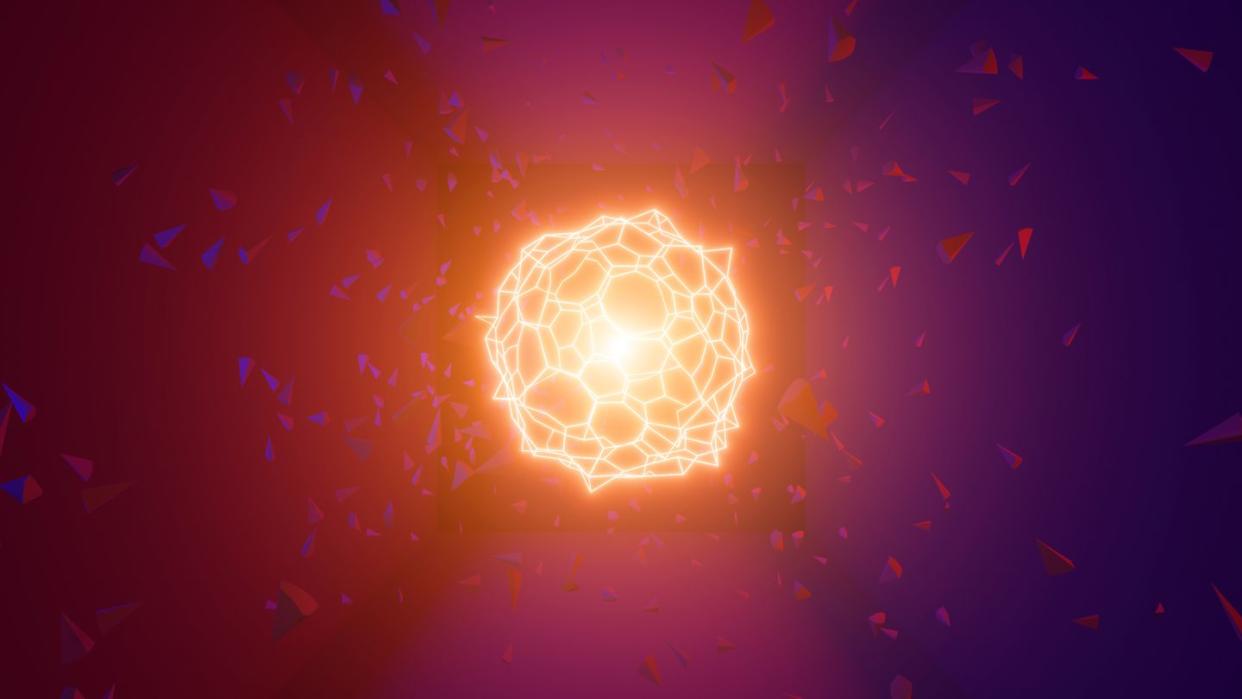Nuclear Fission Has Been Damn Near Impossible to Find in the Cosmos. Until Now.

Nuclear fission is a substantial part of the world’s energy mix, but out in the broader universe, fission is much harder to come by.
Now, a new study from Los Alamos National Laboratory and North Carolina State University has found compelling evidence of nuclear fission following neutron star mergers.
This fission occurs when atomic nuclei grab free neutrons and form heavy, but unstable, elements.
When it comes to nuclear energy, human engineering and the rest of the universe are a bit at odds. The countless stars that light up the night sky are all fueled by the fires of nuclear fusion, where light atomic nuclei combine to form heavier elements. Although our warming world is in desperate need of fusion technology, today’s nuclear reactors are instead powered by fission—a sort of reverse-fusion where heavier elements (specifically Uranium-235) break down into smaller atoms, releasing energy in the process.
But what has become a utility-scale energy source on Earth has actually never been found naturally occurring in the universe—until now.
Scientists have long suspected that fusion must occur somewhere out in the cosmos. They have even suspected that it likely occurs during intense neutron star mergers, which are arguably the most chaotic events in the universe—so chaotic, in fact, that they create ripples in the very fabric of space-time.
Now, scientists at Los Alamos National Laboratory and North Carolina State University have finally found compelling evidence of nuclear fission occurring around these mergers. They did so by studying a positive correlation among “light precision metals like silver and rare earth nuclei like europium,” according to a press statement. The results of the study were published this week in the journal Science.
“People have thought fission was happening in the cosmos, but to date, no one has been able to prove it,” co-author Matthew Mumpower, a theoretical physicist at Los Alamos National Laboratory, said in the press statement. “As we’ve acquired more observations, the cosmos is saying hey, there’s a signature here, and it can only come from fission.”
Neutron stars are ultra-dense corpses of dead stars that are jam-packed with neutrons. They are so dense that just one tablespoon of matter from a neutron star would weigh the equivalent of 1 billion tons on Earth, according to Space.com. When two of these extreme stars merge, the stage is set for a process scientists call “rapid neutron capture,” or simply “r-process”—where atomic nuclei grab hold of newly freed neutrons to form heavier elements.
A previous paper from 2020 predicted the distributions of fission fragments during this process, and another study predicted the correlation between the aforementioned light precision metals and rare earth nuclei. Both papers were also co-authored by Mumpower. This new study looks at data from 42 different stars enriched by r-process materials and effectively confirms these predictions, delivering strong evidence that not only is fission occurring in these environments, it is briefly producing elements with an atomic mass greater than 260–beyond the extreme end of the periodic table.
“The correlation is very robust in r-process enhanced stars where we have sufficient data. Every time nature produces an atom of silver, it’s also producing heavier rare earth nuclei in proportion. The composition of these element groups are in lock step,” Mumpower said in the press statement. “We have shown that only one mechanism can be responsible—fission—and people have been racking brains about this since the 1950s.”
So, that’s a check in the fission column for the universe. Next up: Earth-bound fusion.
You Might Also Like

